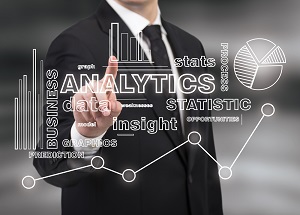As we usher in 2020, the total global population will have reached 7.8 billion. Across the globe, more of us live in cities than in rural areas, and that percentage is expected to increase into the future. In fact, the United Nations predicts that 68% of global citizens will reside in urban areas by 2050.
With a continuously rising urban population, infrastructure planning becomes even more vital to the health and happiness of all people. Of course, exercise, proper sleep, and socialization are keys to a happier life, but infrastructure plays a major role as well. Researchers have even found strong links between poor infrastructure and a reduced quality of life. Thoughtful city planning and investments in stable infrastructure are also integral to alleviating poverty while also creating jobs.
To that end, predictive data analytics is an integral component in the worldwide push to improve public transportation and infrastructure in a way that’s beneficial to citizens. Big data can help city planners to prioritize both public safety and overall health, especially in urban areas. Today’s cities should be designed and/or improved based on the needs of its people, and data collection holds the key to economic growth and prosperity.
Looking at Successful Public Transportation Models
Poor infrastructure, unfortunately, tends to get the bulk of press coverage in the realm of city planning. For instance, in 2018, CNBC reported that poor infrastructure, from bottled water during a boil advisory to car repairs from unmaintained roads, costs American families about $3,400 annually. Yet there are a number of municipalities worldwide that are getting it right.
Seoul, South Korea, is a prime example of how a major metropolis can operate an affordable public transportation system that’s both efficient and cost-effective. Nine subway lines operate throughout the city of 9.7 million, along with a number of buses. According to the Seoul Tourism Organization, the city’s subway system is considered “one of the best in the world for its ease of use, cleanliness, and frequency of service.”
But while it’s relatively easy to identify the cities with public transportation models that work, it’s much more difficult to achieve similar results. That’s where data comes in: City planners must collect data, study the results, and then make decisions based on the findings. The process sounds simple, but it’s trickier than it appears on the surface.
Predictive Analytics and City Planning
For instance, city planners may have a rough idea of what is needed to make streets safer for pedestrians and cyclists. Using predictive analytics, city planners can input crash and demographic data and then make an informed decision based on that data. However, there are other factors that can come into play, effectively muddling the decision-making process.
City planners may, therefore, need a bit more guidance when working to solve large-scale issues involving infrastructure. Rather than utilizing predictive analytics, for example, city planners should perhaps turn to the discipline of prescriptive analytics instead. Using prescriptive analytics, infrastructure problems, commuter data, and more are analyzed, and then options are automatically curated and proposed based on that data.
Considering Bicyclists and Designated Travel Lanes
Keeping drivers, pedestrians, and cyclists safe on the road is of paramount importance for every city government. And across the U.S., one major problem area in recent years are bike lanes. On the surface, bike lanes seem like a smart idea — they keep bicyclists separate from motorized vehicles, as well as off the sidewalks.
But, as with much of the logistics of urban infrastructure, it’s not that simple. In fact, data indicates that the existence of bike lanes may not automatically correlate with a safer commute. There are a number of factors that support this data. For starters, adding a bike lane on an existing road typically doesn’t involve widening that road. Instead, traffic lanes become more narrow, and drivers may not respect those boundaries.
The good news is that we can collect data on how narrowed vehicle lanes impact roadway safety. That data, coupled with additional information about commuting habits, population density, and more, can then be analyzed by future city planners looking to improve infrastructure. As our cities continue to grow and evolve, we’ll need all the data and analytical methods we can get in order to keep people safe, healthy, and happy, no matter where they live. And while our cities are improving in terms of infrastructure and ensuring safe commutes, we’ll also be creating new jobs and new opportunities for people and skilled workers in the meantime.
About the Author

Magnolia Potter is a muggle from the Pacific Northwest who writes from time to time. She covers a variety of topics and prefers not to settle on just one. When Magnolia’s not writing, you can find her in the outdoors or curled up with a good book and a mug of butterbeer. She is still waiting for her Hogwarts acceptance letter. You can chat with her on Twitter @MuggleMagnolia.
Sign up for the free insideAI News newsletter.




